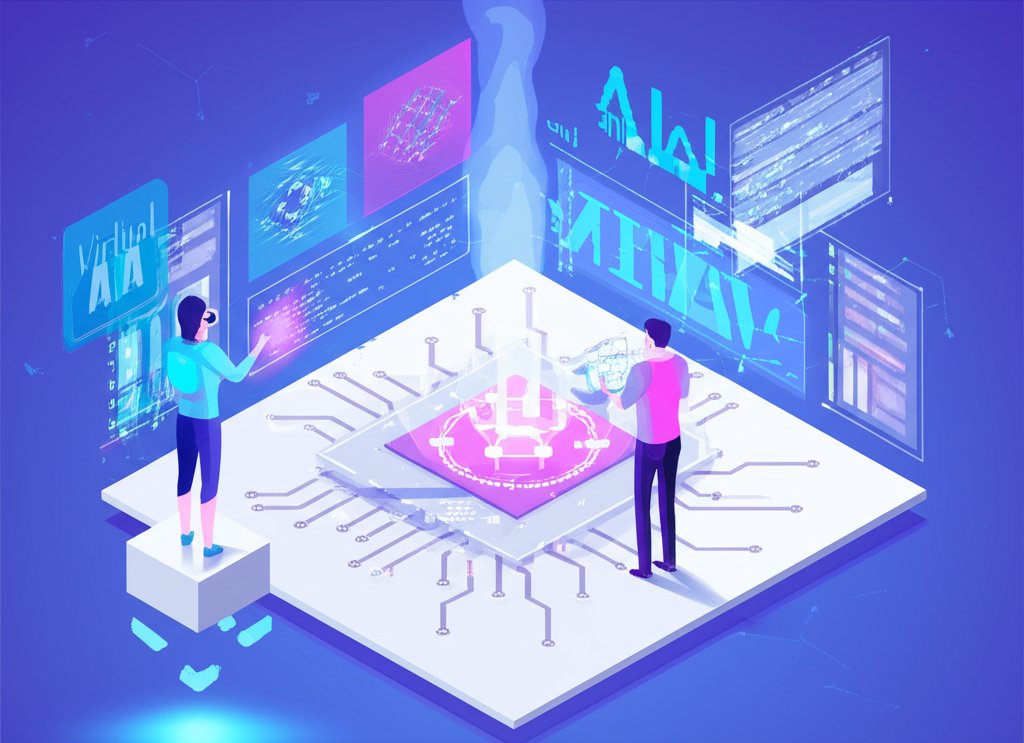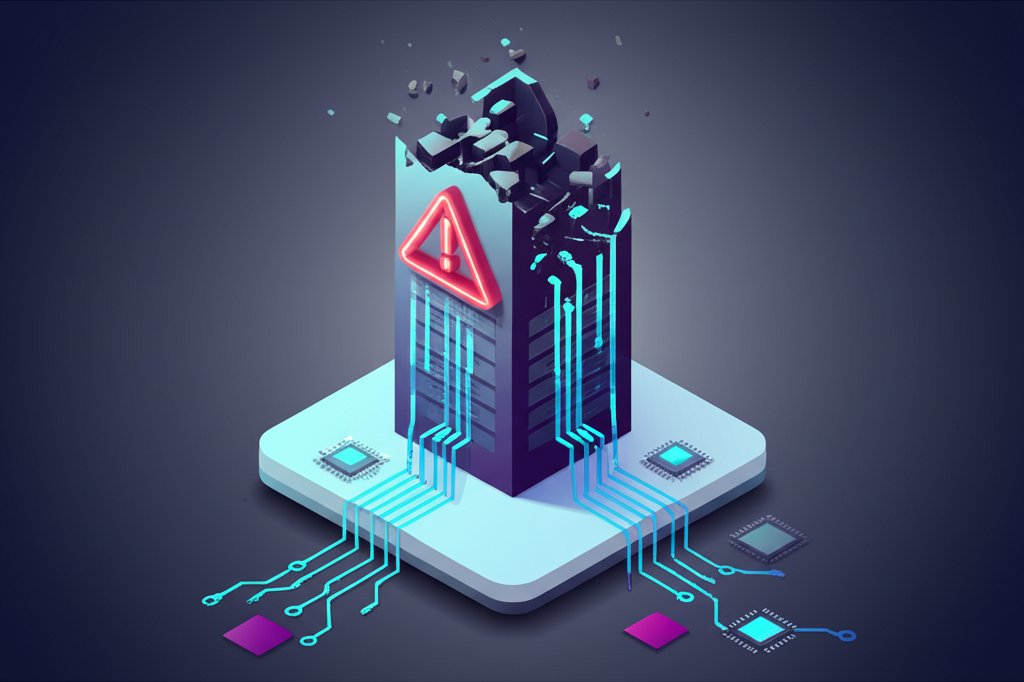The architectural landscape is undergoing a profound digital transformation, blurring the lines between the physical and virtual worlds. Designing structures is no longer solely about blueprints and scale models; it’s increasingly about stepping into immersive digital architecture environments where designs can be experienced before a single brick is laid. This evolution, often referred to as virtual architecture, presents exciting possibilities but also inherent architecture risk. This article explores the evolving realm of virtual architecture, examining its potential impact on the profession and considering the perspective of risk management expert, Daniel R. Locke, on navigating this digital architecture frontier. While concrete details of Locke’s vision for a “Virtual AIA” remain elusive, his background suggests a focus on responsible technological adoption, emphasizing the importance of security and stability in these emerging virtual environments, a crucial step for the aia future.
Redefining Design: The Rise of Virtual Architecture
Virtual Design and Construction (VDC), encompassing technologies like Building Information Modeling (BIM), 3D modeling, virtual reality (VR), and augmented reality (AR), is rapidly reshaping **digital architecture** practice. This robust framework for **virtual architecture** allows architects to collaborate seamlessly on a project within a shared virtual space, conduct design reviews in immersive VR, and allow clients to “walk through” their future building before construction even begins. This is the transformative potential of VDC. It’s not just about visualizing designs; it’s about fostering collaboration, mitigating risk, and enhancing client engagement.
Enhanced Collaboration and Risk Mitigation
VDC platforms facilitate real-time data sharing and visualization, improving communication and coordination among project teams. This shared understanding significantly reduces the likelihood of errors and misunderstandings, leading to greater efficiency and cost savings. Moreover, VDC enables early identification and resolution of design flaws through virtual prototyping and analysis. This proactive approach to **architecture risk** management, likely a key aspect of Locke’s perspective, minimizes rework and delays, ensuring smoother project delivery. As Daniel R. Locke’s expertise lies in risk management, it suggests a probable emphasis on building secure and stable virtual environments for design exploration and analysis.
Addressing **architecture risk** formally within these virtual environments is paramount. This involves a systematic assessment process to identify, evaluate, and prioritize potential threats, vulnerabilities, and negative consequences within architectural designs. From anticipating structural issues to foreseeing compliance challenges, VDC tools enable architects to develop robust mitigation strategies before problems materialize in physical construction. This forward-looking analysis of risk is a cornerstone of responsible **digital architecture**.
Empowering Clients through Immersive Experiences
VDC empowers clients with a level of engagement previously unimaginable. Instead of deciphering complex 2D drawings, clients can experience their future space through immersive virtual tours, explore different finishes and layouts, and provide feedback directly within the virtual environment. This interactive approach strengthens the client-architect relationship and ensures alignment between vision and final product.
Technology’s Impact: Reshaping the Architect’s Role

The digital revolution in architecture extends beyond VDC. Artificial intelligence (AI), big data analytics, and cloud computing are also reshaping the profession. AI offers the potential to automate repetitive tasks, generate design options, and optimize building performance. While some speculate about the possibility of AI replacing architects, it’s more likely that AI will become a powerful tool, augmenting human creativity and enabling architects to focus on higher-level design thinking. Big data and analytics offer insights into urban development trends, informing design decisions with robust statistical evidence. Cloud computing facilitates real-time collaboration and data sharing, connecting project teams across the globe. These technologies collectively empower architects to create more innovative, efficient, and sustainable buildings. The integration of these advancements demands adaptability from architects, encouraging them to blend artistic vision with technical proficiency.
Defining Digital Architecture: Beyond the Blueprint
While often used interchangeably with **virtual architecture**, **digital architecture** encompasses a broader scope, referring to any aspect of architecture that features digital technologies or considers digital platforms as online spaces. This includes not just immersive VR experiences but also the foundational digital tools like BIM, generative design powered by AI, and even the conceptualization of spaces within hyper-real, virtual, and cyberspace environments. It’s about how architects leverage algorithms, data, and interconnected digital systems to conceive, design, analyze, and manage buildings, extending their reach into realms far beyond traditional physical constraints. The rise of **digital architecture** fundamentally redefines the design process, making it more iterative, analytical, and collaborative.
Navigating the Digital Frontier: A Focus on Risk
As the **digital architecture** landscape becomes increasingly virtual, the importance of responsible technology adoption and proactive **architecture risk** management cannot be overstated. This is where Daniel R. Locke’s perspective, rooted in assessing and mitigating **architecture risk**, becomes particularly relevant. While the specifics of his envisioned “Virtual AIA” remain unclear, it likely emphasizes the need for secure, reliable virtual environments that adhere to professional standards—a critical aspect for the **aia future**. Protecting intellectual property, ensuring data integrity, and navigating the legal implications of **virtual architecture** designs are crucial considerations. Locke’s background at LDX Solutions, a company specializing in technology solutions for the insurance industry—a sector acutely aware of risk—suggests a pragmatic and proactive approach to managing **architecture risk** in **virtual architecture**. This focus on security and stability is essential for fostering trust, ensuring compliance, and guaranteeing the long-term success of virtual design and construction, aligning with the broader vision for the **aia future**.
The Future of Architecture: An Evolving Landscape
The **aia future** of architecture is dynamic and uncertain, shaped by ongoing research and technological advancements. How will virtual environments interact with augmented reality and the Internet of Things? Will generative design, powered by AI, fundamentally alter the design process? These are questions being actively explored within the realm of **digital architecture**. While some experts believe that **virtual architecture** will become an integral part of every project, others caution that the technology requires further development. The ongoing dialogue between human creativity and technological potential will define the **aia future** of the profession. Daniel R. Locke’s emphasis on **architecture risk** management provides a valuable framework for navigating this evolving landscape, ensuring that the adoption of new technologies strengthens the industry rather than exposing it to new vulnerabilities. This forward-thinking approach is crucial for bodies like the AIA as they shape the standards and education for the profession’s digital transformation. Discover the latest trends and adorable outfits for your little ones with our charming amelia kidswear collection.
Daniel R. Locke’s Vision for a Virtual Future

While concrete details of Locke’s “Virtual AIA” concept remain elusive, several key themes emerge from his background and experience. His work suggests a deep interest in leveraging technology, particularly immersive experiences, to transform architectural design. He likely envisions a future where the digital and physical realms of buildings are seamlessly interconnected, expanding creative possibilities and enhancing collaboration throughout the design process.
Beyond BIM: A Holistic Digital Ecosystem
Locke’s vision for a **virtual AIA** likely extends beyond simply using BIM software. It probably encompasses a more holistic **digital architecture** ecosystem, integrating technologies like AI, VR, and AR to streamline workflows and enhance decision-making. His concept suggests the American Institute of Architects (AIA) evolving into a central digital hub, fostering collaboration and knowledge sharing across the profession—a critical step for the **aia future**. This could empower individual architects with the tools and resources to effectively manage **architecture risk** in an increasingly complex digital environment.
Addressing the Practicalities and Risks of Virtual Design
While the visual appeal of **virtual architecture** is undeniable, Locke’s background suggests a keen awareness of the practical challenges and potential **architecture risk**. Security, data integrity, and the legal implications of virtual designs are likely key considerations. He probably emphasizes the need for robust safeguards, clear protocols, and reliable platforms to effectively manage **architecture risk** and ensure the responsible and sustainable adoption of these transformative technologies within **digital architecture**.
The Architect’s Evolving Role
How will this virtual shift impact the architect’s daily work within **digital architecture**? Will design processes become more automated, freeing architects to focus on creative problem-solving and client interaction? Will virtual environments become the primary interface for client collaboration, offering more engaging and interactive experiences? These are questions that Locke’s vision for a **virtual AIA** encourages us to explore, shaping the very core of the **aia future**. Preparing the next generation of architects for this **digital architecture** future will require adapting architectural education, incorporating not only technical skills but also a deep understanding of the associated **architecture risk** and ethical considerations.
While Locke’s specific vision for “Virtual AIA” remains somewhat speculative, his focus on **architecture risk** management offers a crucial perspective. It reminds us that technological advancements in **digital architecture** and **virtual architecture** must be implemented responsibly, with a clear understanding of both their potential and their perils. As the architectural profession continues its **digital transformation**, shaping the **aia future**, Locke’s insights encourage us to embrace innovation while prioritizing security, stability, and the long-term health of the industry.










